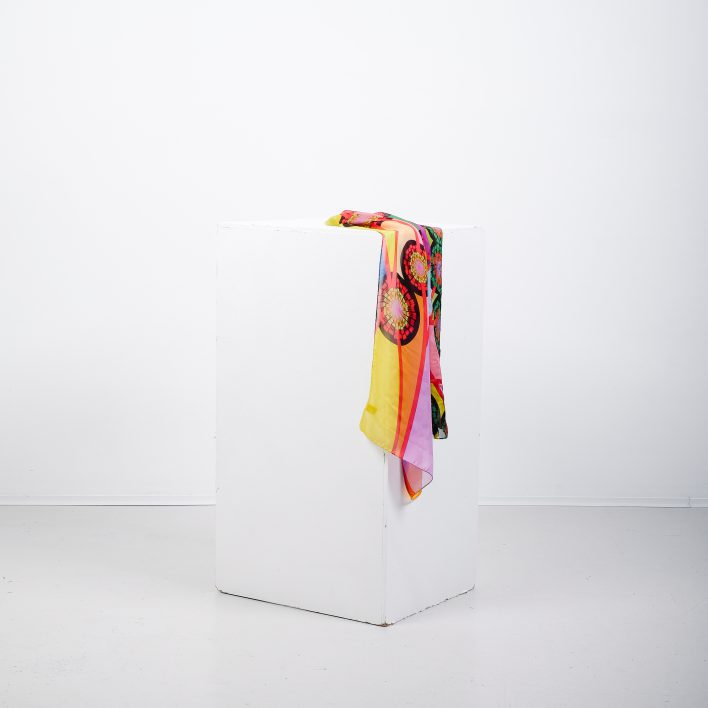Roma Thara
A scarf inspired by Rroma stories



Younited Cultures has set out to break stereotypes and to present the fascinating and extremely complex culture of the Rroma through its work.
THE RROMA STORY in a nutshell
The Rroma are among the first migrants worldwide. There are 27 Rroma groups that have been dealing with the topic of cultural identity for centuries. They are among the first migrants worldwide. Due to decades of discrimination, oppression, and lack of opportunities, Rroma society today is characterized by a negative image. Due to decades of discrimination, oppression, and lack of opportunities, the Rroma society is today marked by a negative image. Younited Cultures has set itself on the path to break stereotypes and to make the fascinating and extremely complex Rroma culture visible.
2015 in Vienna, the Rroma society starts from a completely new perspective, whose members see themselves as proud and successful Rroma who want to be recognized for their achievements. Whether as artists, or entrepreneurs, translators or actors, the Rroma wish to be appreciated above all as valuable and dignified people. Our scarf represents the Rroma society of today, in which a new image and a new identity have developed. Its outline is not yet clear, but strong personalities are already emerging and its image is very much characterized by colors: one color stands for its own past, one for the present, and one color is dedicated to the connection with its own culture.
THE SCARF’S STORY
The design was inspired by eight personal Rroma migration stories. The three main colors stand for one’s own past, for the present, and for the connection to their own culture. The red lines symbolize the kinship connections that occur between the different Roma families. The red circles represent traditional Rroma families, whereas newer generations are pictures through green circles. As a pattern, the design pictures the Rroma society as it is today – colorful with a new image and identity.
Production
The scarf was designed by co-founder Iulia Berger-Mugescu and printed on silk in Italy, at Lake Como.




